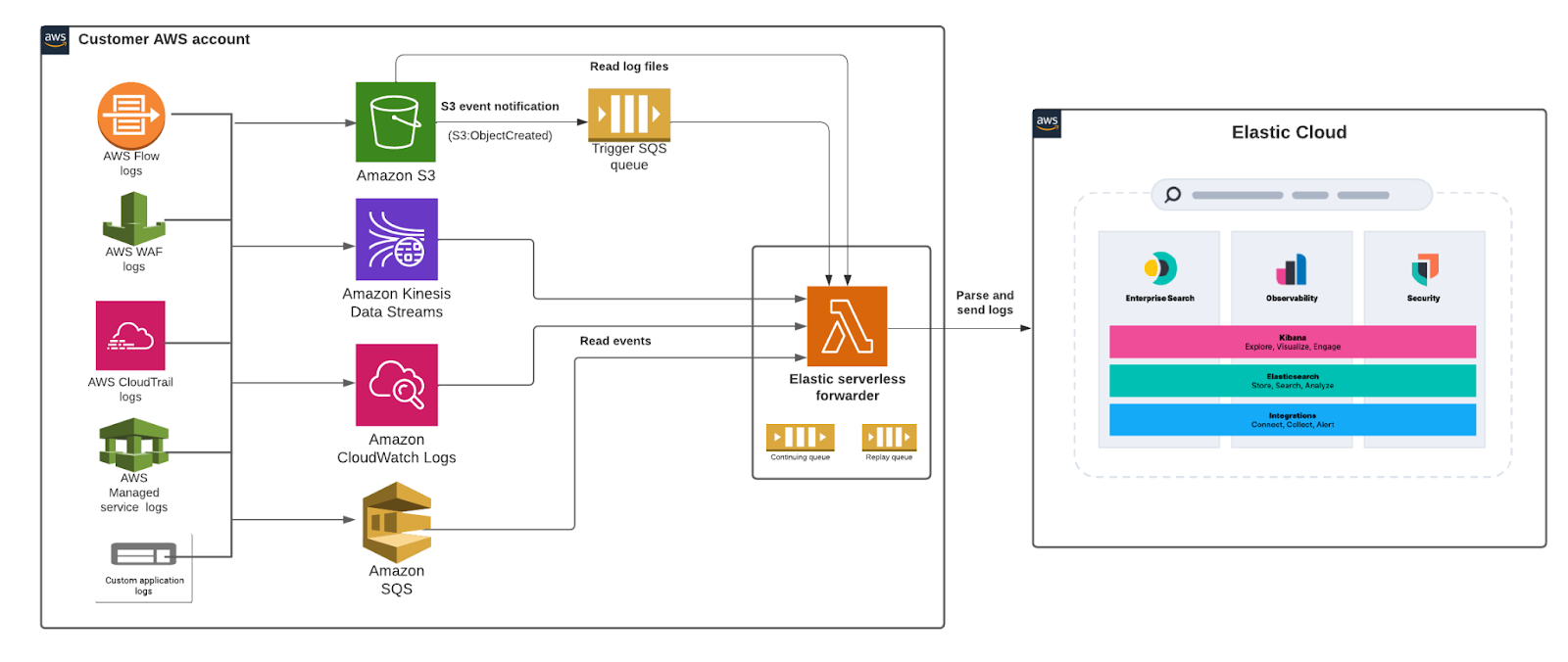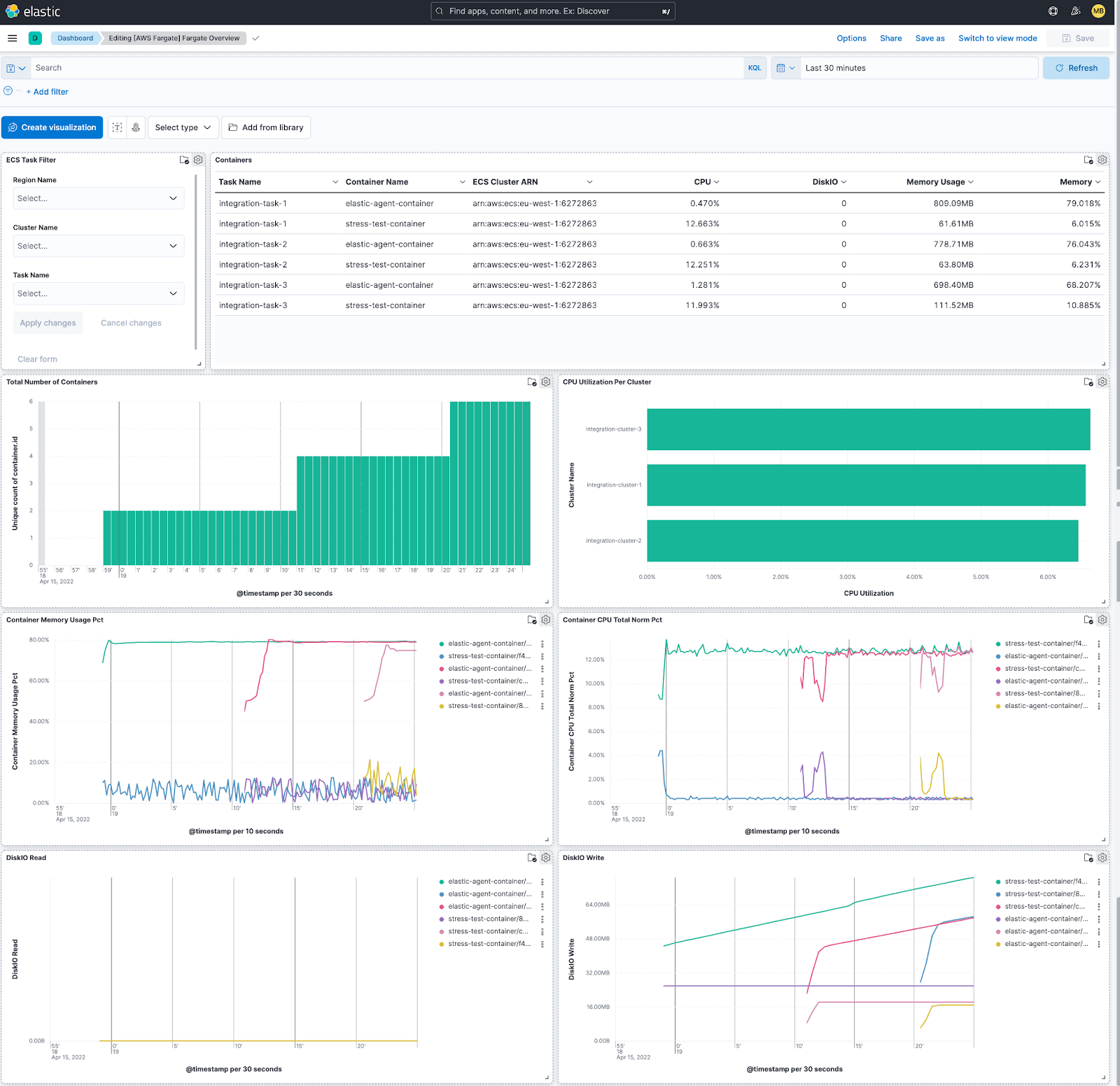What’s new in 8.3
editWhat’s new in 8.3
editHere are the highlights of what’s new and improved in 8.3.
Other versions: 8.2 | 8.1 | 8.0 | 7.17 |
Elastic Serverless Forwarder is now Generally Available (GA)
editThe Elastic Serverless Forwarder is now GA! This AWS Lambda application allows you streamline ingest of logs from multiple Amazon cloud services, including CloudWatch, Kinesis Data Streams, S3, and SQS.

For more information, see this blog or read the docs.
APM Server introduces support for OpenTelemetry protocol over HTTP transport
editStarting in version 8.3, APM Server supports the OpenTelemetry protocol over HTTP transport (OTLP/HTTP). This new support is in addition to the existing OTLP protocol over gRPC transport (OTLP/gRPC). Both OTLP/gRPC and OTLP/HTTP use the same protobuf payload.
The OTLP/HTTP protocol is useful for users with gRPC-based infrastructure limitations, or users who want to take advantage of the smaller HTTP dependency. These benefits and additional details are outlined in the official OpenTelemetry HTTP proposal.
New AWS Fargate integration available as beta
editAWS Fargate allows you to run ECS containers without having to manage servers or clusters of EC2 instances. Elastic’s new AWS Fargate integration (beta) enables monitoring of Amazon ECS containers and includes an out-of-the-box dashboard.

For more information, see the AWS Fargate documentation.
New integrations for Salesforce, Hadoop, Nagios, Apache Spark, and Spring Boot
editNew out-of-the-box Elastic integrations (beta) for Salesforce and Hadoop give you the visibility you need to troubleshoot performance issues with these platforms. We have also introduced new Elastic Agent integrations for Nagios, Apache Spark, and Spring Boot.
To learn more about these new integrations, see the Integrations documentation.
Simplified management of Elastic Agents at scale
editRolling upgrades now allow you to specify scheduled maintenance windows for Elastic Agent upgrades. The platform will take care of spreading the load of upgrades across the specified window in order to reduce the burden on the network resources. In addition, you will be able to set a future date and time for maintenance to take place.
You also now have the ability to attach tags to Elastic Agents during installation and see those tags in the Fleet UI. You can filter and apply actions to Elastic Agents based on these tags for greater control over agents at scale.